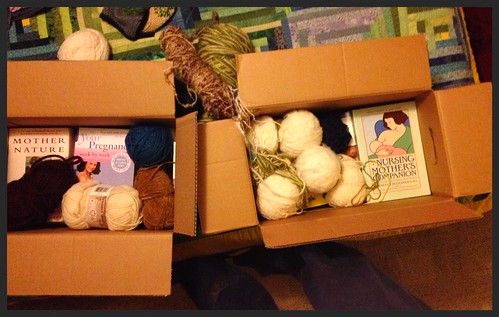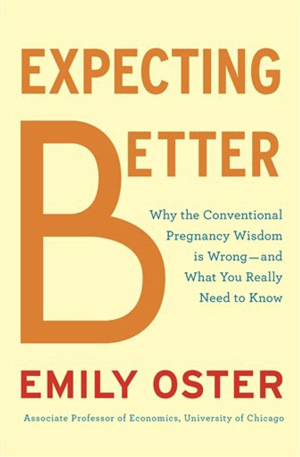"But I practically raised my younger siblings / my sister's kids. I don't need to take a childbirth class."
"I'm getting an epidural, I don't need to take a birthing class."
"It's not worth the money to take a class, I'll just look up stuff online or read a book."
"I'm getting an epidural, I don't need to take a birthing class."
"It's not worth the money to take a class, I'll just look up stuff online or read a book."
"My doctor will just tell me what to do, I know he/she wants the best for me -- I don't need to take a childbirth ed class."
"But I practically raised my younger siblings / my sister's kids. I don't need to take a childbirth class."
Maybe you helped take care of your younger siblings, or you spend a lot of time with your nieces or nephews, or maybe you're even a daycare provider or a nanny -- then, yes, you know A LOT about how to take care of babies. You probably know how to diaper, how to swaddle, how give a baby a bottle. But how long has it been since your siblings were babies? If your younger sister just graduated from college, you may want to rethink your knowledge about infant-care, for the simple reason that the rules have changed since she was a baby. Perhaps when she was an infant, your mom gave her rice cereal in her bottle at 6-weeks old, to help her "sleep through the night". Maybe Gramma instructed you to put baby to sleep on her tummy, in case she spit up. Maybe you saw dad put baby's car-seat facing forward at a year, because that was the rule at the time. ALL OF THESE ARE NOT THE CURRENT RECOMMENDATIONS. How would you know that the American Academy of Pediatrics recommends delaying solid foods (which includes rice cereal) until 6 months old (and many other organizations suggest forgetting about rice cereal all together)? How would you know that babies should be put to sleep on their backs ("Back to Sleep") to prevent suffocation? How would you know that the current recommendation is to keep car-seats facing backwards for at least TWO YEARS, and maybe even longer (until the seat is no longer approved for rear-facing based on the weight of the child)? You may not even think to look up these guidelines online or in a book, because you "already know", based on your care of your younger siblings. It is so important to know the up-to-date information to keep your baby safe.
** If you are in this situation, you may want to see what you learn from class #5, Basic Newborn Care and Feeding. If all that information was new, then you can sign up for the optional hand's-on Newborn Care class (#8).
But maybe you DO know all this, because your sister's kids were only born a few years ago, and your sister makes sure to explain how to keep them safe. That's awesome -- you're one step ahead of your peers. But there are some things that you still do not learn from babysitting your nieces and nephews. Most likely you are not breastfeeding your sister's kids, so you don't know what it feels like to have a good latch; you haven't practiced the different kinds of breastfeeding holds to see what feels good; and you haven't had the experience of nursing a sleepy baby, or a biting baby, or a gassy baby. If you watch them during the day, you have no idea what it is like to wake to feed a baby every few hours all night, every night (and maybe you're not aware that it is PERFECTLY NORMAL for a breastfed baby to wake every 2 hours to nurse). You probably weren't in charge of making sure your sister's baby ate enough, counting wet diapers and answering the pediatrician's questions. You probably weren't in charge of deciding whether your niece or nephew was breastfed or formula-fed (though you may unconsciously decide that however your sister fed her babies is how YOU will feed your baby, without thinking through it yourself). There are so many decisions about those babies that you may not have been a part of, and a good childbirth prep class will help you prepare for all of them.
Also, watching your sister's child is not the same as taking care of YOUR child. Your niece's crying does not elicit the same hormonal shift as your own baby's cry, and your nephew's ear-pounding scream will not course through your body like that from your own baby. You did not suffer postpartum blues or depression when your nephew was born, so you did not have to worry about how you were going to take care of him while treating your own chemical imbalance. Again, a good childbirth class will help you prepare for the possibility of Postpartum Depression, and help you make a plan for getting real, practical help with your baby.
** If you are in this situation, you may want to see what you learn from class #5, Basic Newborn Care and Feeding. If all that information was new, then you can sign up for the optional hand's-on Breastfeeding class (#7).
"I'm getting an epidural, I don't need to take a birthing class."
I have absolutely so problem with your desire for an epidural. What I want to make sure, however, is that you made the decision to get an epidural based on YOUR desires for pain management, and not just because "that's what you do". Do you know the risks and benefits of choosing an epidural? Have you weighed those against the risks and benefits of other pain management methods (other analgesics [Pain-Taker-awayers] or non-medicated techniques)? Do you know what else might be required if you choose to have an epidural (e.g. continuous fetal monitoring, catheter, laboring in bed)? Do you know ways of preventing fetal malposition with an epidural (a common side-effect)? A good birthing class will not care if you are planning a non-medicated birth or one with pain medication, but will help you 1) know your options and make an informed decision, and 2) help you prevent the side-effects with some skills and hands-on practice.
Also, it is unlikely that you will be able to have an epidural placed BEFORE Active Labor (usually doctors like to wait until about 5cm before placing an epidural), so you may be laboring without it for many hours. Even after you get to the hospital, it may take some time for the anesthesiologist to get to you. If you believe "I'm getting an epidural, I won't have any pain during labor", you may be shocked and unable to cope with early labor. Having some non-medicated pain management techniques in your bag of tricks will help you save your energy in early labor and help you cope until you can get the epidural you want.
Finally, there is a 15% chance that your epidural won't numb you all the way, and a 5% chance that it won't numb you at all. You may end up laboring with partial pain for a long time. Knowing what to do to relax and cope with labor pain without a working epidural is going to be vital if this happens to you.
** Classes #2 and #3 cover laboring and pushing positions with and without an epidural, Class #3 covers many types of medicated AND non-medicated pain management techniques, and Class #4 covers other interventions that can accompany an epidural.
"It's not worth the money to take a class, I'll just look up stuff online or read a book."
There are so many wonderful books about pregnancy and birth, but there is something to be said about having a teacher answer your specific questions AND help you practice your relaxation techniques and birthing positions. You can read a book about the stages of labor, but your teacher has read 15 books about the stages of labor, and can pull things from each of them to help you understand. You can read about the double-hip-squeeze to help with contraction pain, but your teacher has DONE the double-hip-squeeze and knows what it should feel like. You can ask a teacher for clarification if you do not understand -- the author of a book probably won't get back to you before your baby arrives. And it is your teacher's JOB to make sure you understand before leaving class, so keep asking questions until you do.
The other amazing thing about childbirth ed classes is the other pregnant couples in the room. You're all in this together. Each week you'll get to talk with other moms and dads and partners who are going through the same things you are. They'll ask questions that you didn't even think to ask, or maybe they'll have a perspective on a topic that you never considered. After the class series is finished, you're going to remember (and maybe still be friends with) these people, because you shared this awesome experience with them. (Many courses will also have a "reunion" class after all the babies are born, so you can come together one more time and share your birth stories.)
**Each class begins with a group discussion, meant to help us get to know each other. Every class involves some sort of discussion about topics relating to pregnancy, birth, pain management, decision-making, and newborn care. Classes #2 and #3 include practicing labor and birth positions, optional class #7 includes hands-on practice for breastfeeding, and optional class #8 includes hands-on practice for newborn care. At the end of each class, there is time for discussing additional topics if parents wish. Finally, the childbirth teacher is always available to answer questions via email in between classes and after the course has finished.
"My doctor will just tell me what to do, I know he/she wants the best for me -- I don't need to take a childbirth ed class."
This one worries me the most. Yes, most doctors do want the best for you, and many may even agree with you on several aspects of labor and delivery. If you're really REALLY lucky, you and your doctor are on the exact same page about everything. But there are several problems with the logic that your doctor going to help you through labor.
1) If you care provider is an Obstetrician, he or she will most likely NOT be with you during your labor. He may stop in and check on you a few times, or he will call the nurses and ask how it's going. He will arrive at the end to catch the baby. He's not going to be there to help you through contractions. Even the nurses may not be there the whole time. They may have several patients to care for at once, so they may not be able to help you through every contraction. The really really good nurses will know how to help you, physically and emotionally; the not-so-good ones will simply offer to call the anesthesiologist. Just as in the epidural scenario above, you're going to want a few non-medicated pain management techniques under your belt, in case you need to deal with some labor alone.
2) It's possible that you and your doctor are going to disagree on one or more topics surrounding your delivery. Doctors are people, with opinions and biases, just like the rest of us. Their training has A LOT to do with their style of management, as does their experience and their comfort level. You may have done a lot of research and decided on some preferences for your birth; however, your doctor, the nurses, and the hospital itself have their own agenda and style of care. Unless you discuss your preferences with them, they will assume you do not object to their routine management of our labor (it's simpler and easier for them to have a routine, though it may be in conflict with your preferences). It is so important to ask questions about your care, discuss your preferences, and be able to negotiate and compromise with (or simply say no to) your care provider. Women who feel in control of their labor and delivery report greater satisfaction with their birth, have an easier time bonding with their baby, and report fewer negative feelings in their postpartum period.
**Class #1 covers choosing care providers and assessing your preferences. We work on our "birth preferences" throughout the entire class series. Class #4 includes practicing asking questions during doctor's visits and during labor.
**Class #1 covers choosing care providers and assessing your preferences. We work on our "birth preferences" throughout the entire class series. Class #4 includes practicing asking questions during doctor's visits and during labor.
As a childbirth educator, you can say that I am biased in my desire for you to take a (eh'em, MY) childbirth class. But seriously, it's because I know SO MUCH about these topics, and I only know so much because I've been reading every childbirth book, blog, and article I could get my hands on for the last 8 years. I know you do not have time to read 8 years worth of research in the next 9 months, so please, let a childbirth teacher use her knowledge and help you prepare for the birth of your child. You WILL remember this day for the rest of your life, so please let us help make it a great memory.
—---------------------------------------------------------------------------–
Like what you've read? Pregnant and looking for a class in Western/Central Massachusetts?Check out our current class schedule here.
Questions? I'm never very far away from my email.

Follow Crafted Birth on Facebook for updates and birth-related resources.
—---------------------------------------------------------------------------–







